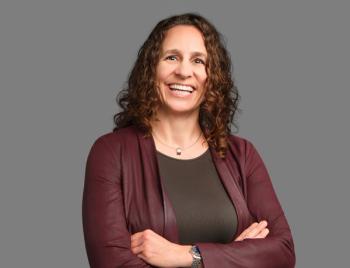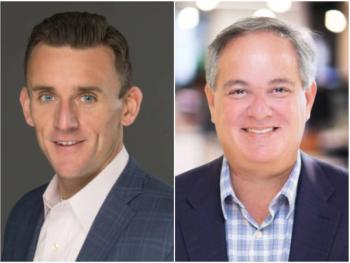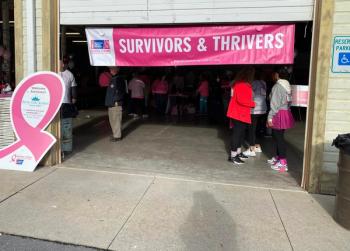
Nuance Communications’ Peter Durlach talks about merging with Microsoft

In an interview with Chief Healthcare Executive, he discussed one of healthcare’s biggest deals, helping doctors, and solving problems for hospitals.
Nearly a year after Microsoft purchased Nuance Communications, Peter Durlach said it’s been a very interesting time.
Durlach is executive vice president and chief strategy officer of Nuance, the voice recognition and conversational AI company. Hospitals and physicians use Nuance’s technology to transcribe notes with patients, and Nuance is employing patient engagement solutions for hospitals.
Microsoft completed the $19.7 billion acquisition of Nuance Communications in March 2022, about a year after announcing its intention of buying the company. The deal was one of the larger healthcare acquisitions in recent years, and it illustrated
Durlach talked with Chief Healthcare Executive about the deal, Nuance’s technology, and the company’s future plans in an interview at the HLTH Conference last month.
“Obviously, it's a big deal when two companies come together, especially at the scale of Microsoft,” Durlach said. “You know, part of the key thesis for us was bringing the power and scale of Microsoft’s horizontal cloud and AI technology with Nuance’s deep healthcare, vertical expertise.” (See excerpts of our conversation in this video. The story continues below.)
With Microsoft’s technology, Nuance can accelerate innovation in the healthcare space, Durlach said.
“Being somewhat humble, Nuance can also bring deep healthcare domain experience to Microsoft,” Durlach said. “So together, we're actually working on producing sort of the next version of the Microsoft Cloud for healthcare strategy, which is a combination of Nuance and Microsoft capabilities … all the way up to the applications that Nuance does today.”
“So we feel we're very unique and having the cloud scale of Microsoft combined with the capabilities of Nuance’s, deeply embedded in the critical workflow of 80% of hospitals and 70% of physicians in the United States,” he said.
Coming together
In a deal the size of Microsoft’s acquisition of Nuance, there is no shortage of complexities, Durlach conceded. Still, he said the merger of the companies has gone well, at least partly due to the fact that Microsoft and Nuance have worked together for years.
“We’ve known the Microsoft leadership people for a long time, so that made us comfortable,” he said.
All of Nuance’s senior management team have remained, Durlach said.
“The whole thesis of the deal before was to keep the healthcare part of Nuance, which is the core part of the business, together,” he said. “So we kept the whole management team, the whole company together. We went in as a bloc.”
When Microsoft completed the deal, the company’s healthcare engineering team was moved underneath Nuance, Durlach said. Microsoft has also shown it wants to preserve the team and strengths Nuance brings to the table.
“They bought us to a large extent to help them get more focused and relevant for healthcare,” he said.
“Like all of us, they’ve had some more successful acquisitions and some less successful acquisitions,” Durlach said. “One of the things you learn really early, one thing you don’t want to do, when you buy a company, is think you know everything.”
While Nuance has lost a few people the company wanted to keep, Durlach said, “the attrition has been very low.”
Although plenty of work remains, Durlach said Microsoft has offered “a tremendous amount of support.”
“Not that Nuance does everything right, by any stretch of the imagination, but we’re deep in the space,” he said.
Moving forward
Even with the COVID-19 pandemic, Nuance has succeeded in getting more health systems and physicians to use its voice recognition technology, Durlach said.
“The fundamental mission we've always had is to take care of those who take care of us,” Durlach said.
He recalled a cartoon of a doctor sitting in a corner, facing away from the patient, because he was working on his computer, and said the image serves as inspiration.
“The metaphor we have internally is, turn the chair around,” Durlach said.
Nuance’s voice recognition software helps doctors do their jobs better, and with less stress, Durlach said.
Nuance’s Dragon Medical One speech recognition software is used by hundreds of thousands of physicians, the company says. In 2020, Nuance launched the Dragon Ambient Experience (DAX), the next generation product, allowing doctors to record conversations naturally without dictation. The AI-powered technology helps doctors to document patient conversations while enabling the physician to focus more on the patient.
Durlach sees DAX as offering a solution to the “massive burnout problem” in healthcare.
“For physicians, when they see a patient, they have two cognitive things going on in their brain. One, they’re trying to listen to you as the patient, and the other one is trying to keep track of what they’re going to document later,” he said.
Because doctors aren’t distracted using DAX, they’re spending more time engaged with the patient, and physicians and health systems are giving DAX high marks, Durlach said. "The patients feel it when the physician is more focused on them," he said.
While Nuance doesn’t provide specific numbers, hundreds of clients are using DAX, he said.
“It’s the fastest growing product we’ve ever had,” Durlach said. “Not that there’s not work to do, it’s early on the journey with the product, but it’s been an incredible success.”
Nuance has also developed an AI-powered patient engagement solution designed to give users a better experience while freeing up hospital staff from handling such a high volume of calls.
Virtual assistants field calls and direct patients to where they need to go. Nuance is touting its patient engagement solution as an appealing option for hospitals, which are struggling to find staff in all areas.
University of Michigan Health-West is one of the healthcare providers that has recently opted to begin using Nuance’s patient engagement platform.
Lance Owens, chief medical information officer at University of Michigan Health-West, said the Nuance platform offers several advantages. Patients can call 24/7 and they aren’t put on hold, he said.
While it’s an automated assistant, Owens said, “It’s a very natural sounding voice. It’s a normal cadence.” He called it “very good technology.”
In many cases, patients will need to talk to a human being, but for patients with simple needs, such as refilling a prescription, the virtual assistant will handle it, Owen said.
“It frees up staff to put that high human touch on patients that really need it,” Owens said. “We want to give that time for our patient service representatives to spend the time without the added stress of 100 people in the queue.”
Nuance expects growing demand for its patient engagement solution to help hospitals with their digital front door, Durlach said.
With the backing of Microsoft, Durlach said he’s optimistic about Nuance’s success and growth, because the company is striving to make “products that solve real problems.”
“We have products that drive up appropriate revenue capture and drive down costs,” Durlach said. “Things that drive up revenue and drive down costs are highly desired.”






















































































